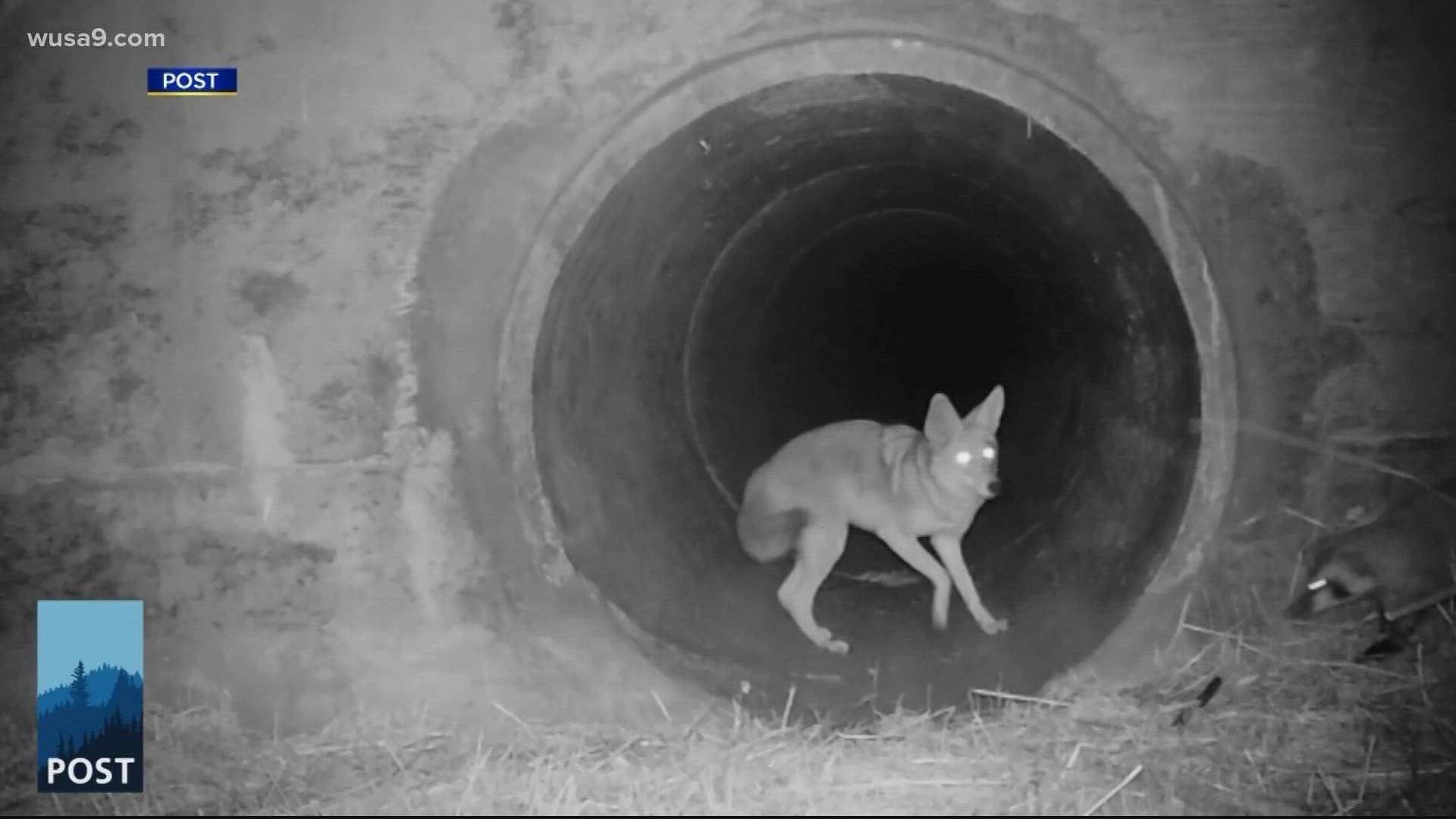WASHINGTON — Years ago, we told you coyotes were slowly infiltrating D.C. – we even shared a few fuzzy pictures of what looked like a coyote in Rock Creek Park.
Now the wily denizens of the desert Southwest seem to be here to stay.
We went out looking for the sly creatures, hoping to shatter a few myths.
Coyotes are a little like the ghosts of Rock Creek Park. Very few people have actually seen them. But at sunrise, in the rain, with snow in the forecast, we tramped through an area of the park they seem to like.
This is the time of year you’re most likely to spy one, wandering the clearings. looking for a mate. It’s eerie in the woods, every clump of grass could hide the shape-shifting tricksters of Native American legend.
But after and hour-long ramble, all we found was what looked like coyote scat.
Wildlife photographer Seth Horstmeyer captured 9 seconds of video, but it took years of trying.
He saw one of the Rock Creek coyotes in 2018. And searched for three years before snapping another.
Over the course of three years, graduate student Dan Herrera searched 150,000 images from 1,500 camera traps stationed around D.C. (part of the Humane Rescue Alliance's Cat Count) -- and only captured 49 pictures of coyotes.
"If I had to estimate, just on the number of detections we’ve had and their locations, I’d say fewer than five individuals....As a rough estimate,” said Herrara.
Coyotes have been known to prey on outside cats.
They sometimes go hunting with badgers.
In 2020, a coyote infected with rabies bit three people in Montgomery County.
But experts say coyote/human conflict is extremely rare.
"So coyotes I think, are smart enough to know that if they interact with a human or human sees them that it's not good for them, right," said Travis Gallo, a professor of urban ecology at George Mason University.
The District Coyote Project has an interactive map of coyote sightings reported by people all across the region.
"That way we can keep track of where people are seeing them...what they need to do to live with coyotes without conflict," said Megan Draheim, one of the project's founders. She's mapped dozens of sightings around the city, almost all in parks, and she's hoping more people will go on their website and report their own sightings.
"I think they're amazing animals. They're really intelligent. They're really adaptable. The fact that they've learned how to live in so many different environments and close to people and away from people is really pretty remarkable," said Draheim.
"Coyotes evolved anywhere from 300,000 to a million years ago in the Pleistocene Era. And they were under control of massive predators like the dire wolf and the sabretooth tiger then. And once those species disappeared, they were then under control of the gray wolf and the red wolf," said Herrera.
"In the past couple of hundred years, we’ve gotten rid of the species that keep coyotes in the southwest, the more dominant species, those wolves. And when those went away, the coyotes took the opportunity to expand their range, and they’ve been coming eastward ever since," he said.
The Mid-Atlantic is among the last regions where coyotes have traveled.
The National Park Service photographed one on the National Mall.
And researchers at the US National Arboretum suspect they have a mating pair.


"We get all crazy and watch Nat Geo to see shows about African dogs and hyenas and stuff, but we actually have wild dogs here in the United States, and they're coyotes," said Gallo.
Experts say coyotes rarely stray from parkland and open space. In fact, in those 150,000 wildlife encounter pictures, not a single one showed a coyote on private land, graduate student Herrera said.
But if you encounter one, it’s smart to stand up tall, scream, maybe even throw a stick in their direction. Urban ecologists call it "hazing." We want them to stay afraid of humans.
Unless they might have pups nearby – in that case, just slowly walk away.
They eat rats and rodents, they help balance the ecosystem, and they return a bit of wild mystery to our urban environment.

